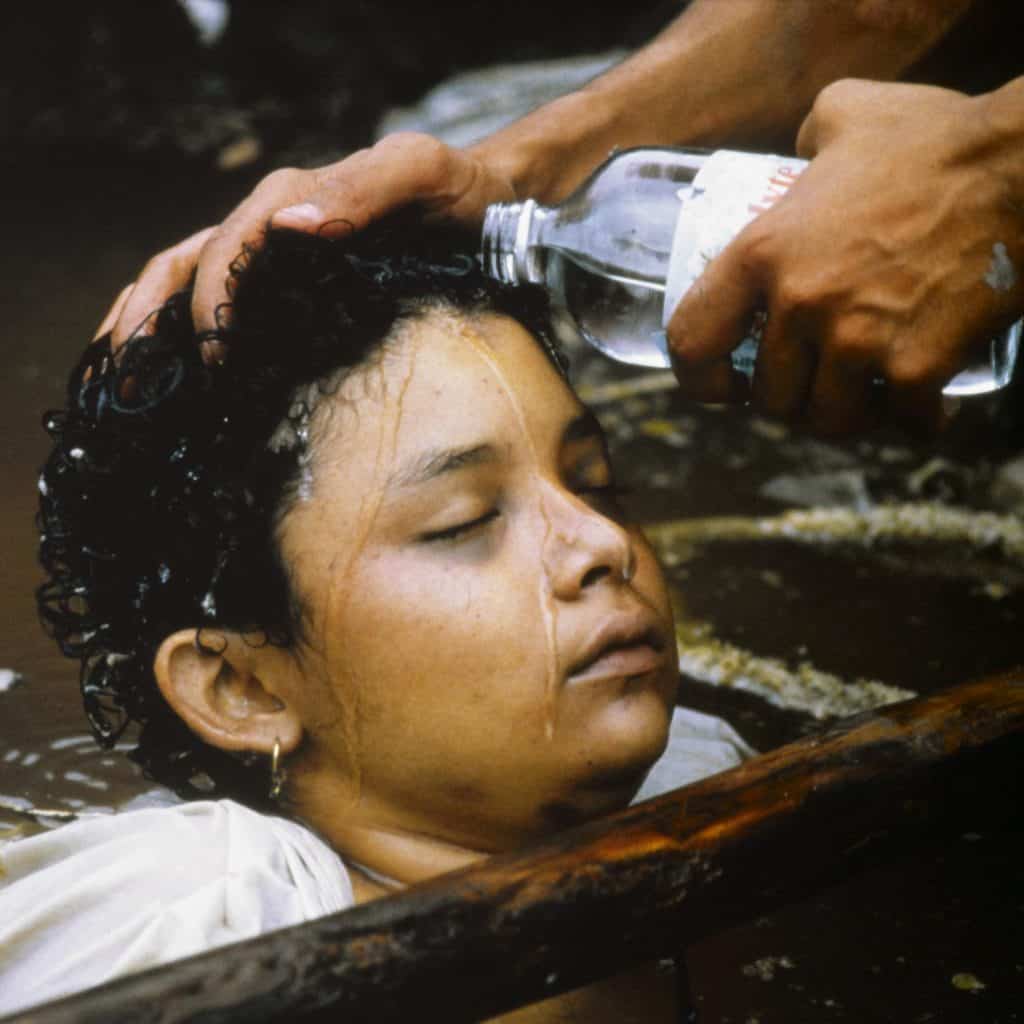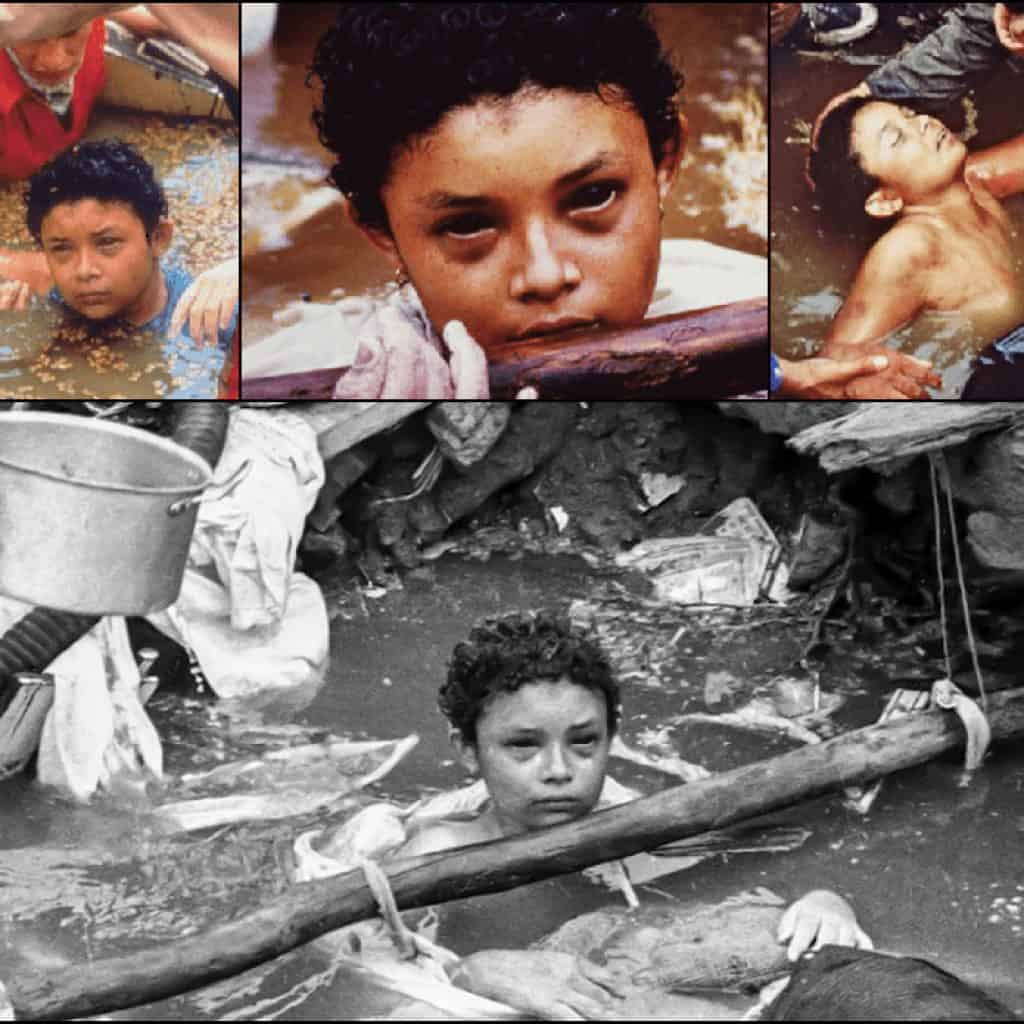The deadliest natural disaster in Colombia’s history occurred in the town of Armero on November 13, 1985. The Nevado del Ruiz volcano erupted after 69 years of inactivity, destroying an entire town and more than 20,000 of its inhabitants.
The young woman who died on camera, Omayra Sanchez
One of them was Omayra Sanchez, a 13-year-old girl who lost her life on camera after struggling for three days.
As is now known, the Armero tragedy could have been avoided.
The Colombian government was aware of the impending volcanic activity in the area, but ignored the warnings, abandoning the shocked inhabitants of the small town to their fate.
The Nevado volcano erupted during the night, melting much of the snow on the mountain. This caused rivers to flow faster than usual, filling the slopes with mud, rocks and lava as they descended, displacing the entire local population.
Most of the 23,000 fatalities that day were residents of the town of Armero.
Trapped in the ruins of her own home
Upon arrival, rescue teams discovered 13-year-old Omayra Sanchez trapped in the rubble of her own home, with water up to her neck and the bodies of her murdered family members underneath her.
As the hours passed, reporters, photographers and television cameras began to capture the efforts made by rescuers to get her out. Omayra, on the other hand, showed an unfathomable level of composure.
“I’m scared, today was the math exam,” she once admitted.
Guioteca claims that rescuers contemplated amputating Omayra’s legs, but decided against it due to a shortage of surgical material and the slim likelihood of Omayra’s survival.
The water level kept rising and, as the nearest motor pump was in Medellín, it was unfeasible to move her in time. Omayra was in a precarious situation and the limited resources of the rescuers made it increasingly difficult to save her.
I can’t swim and I’m worried that the water will rise and I’ll drown,” she admitted. Rescuers told her:
“We swear to you, Omayra, we are going to get you out of here, even if it is almost impossible for us to do so.”
Frank Fournier
Frank Fournier, who captured Omayra just before she passed away in a poignant image that went viral and won him the 1985 World Press Photo Award, was one of the photographers who visited the site.
“She was trapped from the waist down by concrete and other pieces of rubble from the demolished houses inside a sizable pond. She had been there for about three days and was very agonized and confused,” according to the photographer’s conversation with the BBC.
“I was completely unable to help her when I took her picture. I felt her life fading away as she faced death with courage and dignity. I thought the only thing I could do was to share her bravery and suffering while waiting for others to step forward,” he added.
Three days of agony
The young woman spoke to volunteers and journalists about school and her exams during the three days of her suffering and also used the media to communicate with her mother:
While being recorded by television cameras around the world, Omayra declared, “Mother, if you hear me, I want you to pray for me so that everything goes well.”
Omayra died of a heart attack
She reportedly said, “The Lord is waiting for me now” before closing her eyes, raising her face to look at rescuers and journalists and making an effort to smile.
According to BBC reporters, “Omayra was not looking at us pleadingly, she was not defeated and there was a lot of courage in her gaze.” For days, Omayra Sanchez’s tragedy was broadcast on television networks around the world and photographs of her last moments were circulated.
She was quickly associated with Colombia’s worst natural disaster. As her mother did not want her legs amputated to remove her, she was buried in the same place where she died. A French media published Fournier’s horrific image a few months later.
There was no way to cure her
“Why didn’t you help her or get her out of there? people asked me. However, it was impossible,” the photographer recalls.
“What I do, how I do it and why I do it is quite obvious to me. The image served to show the recklessness and cowardice of the country’s leaders while helping the relief effort.
Despite warnings from scientists about the risk of an eruption, no evacuation measures were taken. There are millions of Omayras in the world, stories of weak and impoverished people. We photographers have to create a link between them and the rest of society,” he added.
With information from Yahoo!






